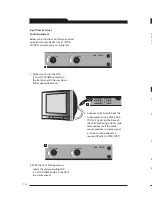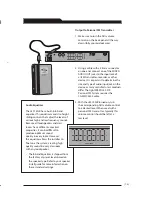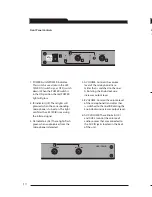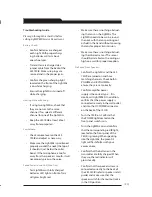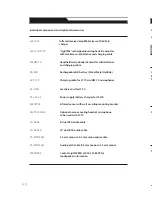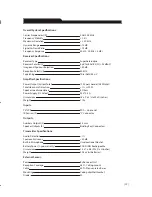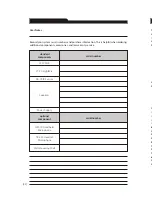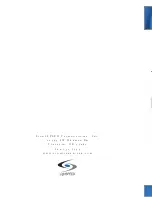
5. IR Sensor Placement
Sensor location is very important for
optimum performance of the LES 750iR
Classroom Amplification System.
• BEST: On the ceiling at or near the
middle of the classroom.
• GOOD: High and centered on the
long wall.
• AVOID: Locations in corners, on walls
at heights lower than 7 feet, or in
places where the line of site is or
could be obstructed.
• Other Considerations: Notice if there
are large areas of dark color (ie. black
boards or dark colored walls). Since
these dark color reflects less light, it
may be necessary to locate the sensor
near these areas.
• Connect the other end of the sensor
cable into either of the sensor inputs
on the back of the LES 750iR.
• Complete Step 7 (testing) to confirm
optimum sensor location, and perma-
nently secure sensor wire from the
sensor back to the receiver.
a. Suspended Ceiling Mount
• Lift the ceiling tile nearest the grid rail in
your desired sensor location. Guide one
side of the C-clip over one edge of the
grid rail. Providing firm support to the
back of the grid rail with one hand (to
prevent bending), firmly and carefully
snap the second side of the C-clip over
the edge of the rail.
• Uncoil sensor wire. Connect one end of
the sensor cable to the plug on the
sensor. Loosely secure wire overhead
and route it back to the receiver.
b. Wall or Solid Ceiling Mount
• Screw the plastic mounting
strip on to a place high on the
wall or in the middle of the solid
ceiling. Mount the strip horizontally
as shown above.
• Firmly snap the C-clip on the back
of the IR sensor onto the plastic
mounting strip with the sensor plug
hanging down (if a wall mount)
or toward the receiver location
(if ceiling mount).
• Uncoil the sensor wire. Connect one
end of the sensor cable to the plug
on the sensor. Loosely secure wire
overhead and route it back to
the LES 750iR.
• Connect the other end of the sensor
cable to either of the sensor inputs
on the back of the LES 750iR.
• Complete Step 7 (testing) to confirm
optimum sensor location and
permanently secure wire from the
sensor back to the LES 750iR.
Five-Year Limited Warranty
to Original Purchaser
The LightSPEED LES 750iR Infrared Class-
room Amplification System is warranteed
against malfunction due to defects in
materials and workmanship for a period
of five years beginning at the date of the
purchase. Batteries and the optional TK-
250 Headset Microphone are warranteed
for one year. Products will be repaired or
replaced at LightSPEED’s option during the
warranty period.
Warranty does not extend to finish, appear-
ance, or malfunctions due to abuse or
misuse. Repairs performed by anyone
other than LightSPEED will void this
warranty. Our Service Department
(800.732.8999, 7 a.m. – 5 p.m., PST) will
handle all your repair/replacement needs.
If you review these instructions and still
have questions, write down the serial
number and model number of your system
and call LightSPEED Technical Services at
800.732.8999, 7 a.m. - 5 p.m. PST.
[4]
Tips on Using Classroom
Amplification
These helpful suggestions are provided
to maximize the successful use of your
new LES 750iR Infrared Classroom
Amplification System.
• Speak in a natural voice. A normal
conversational speech level will provide
an adequate signal. It is not necessary to
increase the intensity of your voice—the
amplification system provides adequate
amplification (approximately 5–10 dB)
above ambient room noises.
• Avoid wearing jewelry that may rub or
bump against the microphone.
• Turn the LightMic off during private
conversations with a student, parent, or
other classroom visitor. You can also
cover the LED lens on top of the
LightMic to block the signal.
• Recharge batteries each night. When
recharged nightly, operating time
(actual usage) for the transmitters will
last through a typical school day. Your
rechargeable batteries will last for a
normal school year when cared
for properly.
ceiling grid rail
wall
mounting
strip
c-clip
sensor jack
[ caution! ]
Do not attempt to charge alkaline
batteries—they can overheat and
expand, creating a significant
hazard and damaging the LightMic.
(This is not covered by the warranty.)
[19]











